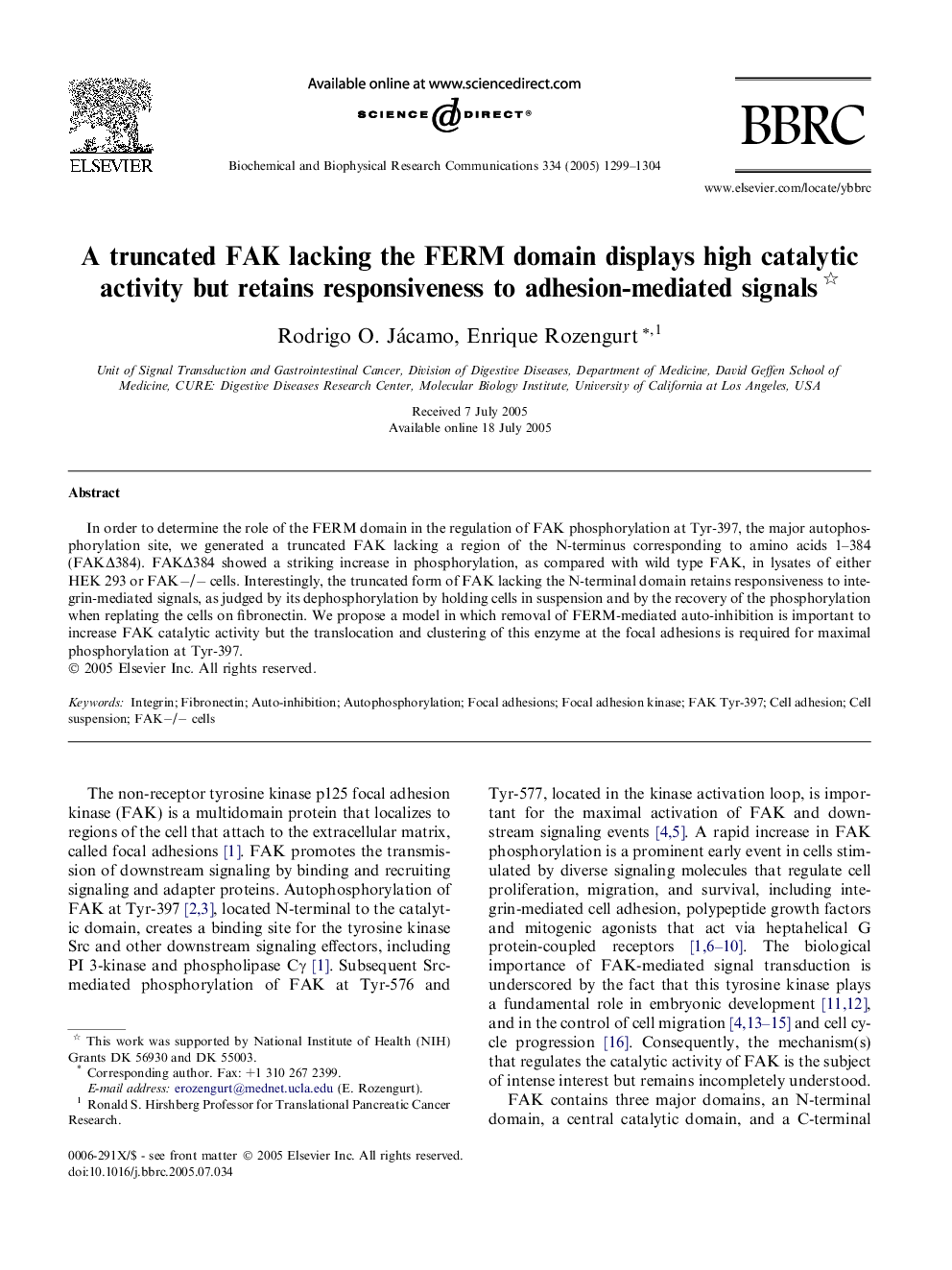| Article ID | Journal | Published Year | Pages | File Type |
|---|---|---|---|---|
| 10769059 | Biochemical and Biophysical Research Communications | 2005 | 6 Pages |
Abstract
In order to determine the role of the FERM domain in the regulation of FAK phosphorylation at Tyr-397, the major autophosphorylation site, we generated a truncated FAK lacking a region of the N-terminus corresponding to amino acids 1-384 (FAKÎ384). FAKÎ384 showed a striking increase in phosphorylation, as compared with wild type FAK, in lysates of either HEK 293 or FAKâ/â cells. Interestingly, the truncated form of FAK lacking the N-terminal domain retains responsiveness to integrin-mediated signals, as judged by its dephosphorylation by holding cells in suspension and by the recovery of the phosphorylation when replating the cells on fibronectin. We propose a model in which removal of FERM-mediated auto-inhibition is important to increase FAK catalytic activity but the translocation and clustering of this enzyme at the focal adhesions is required for maximal phosphorylation at Tyr-397.
Keywords
Related Topics
Life Sciences
Biochemistry, Genetics and Molecular Biology
Biochemistry
Authors
Rodrigo O. Jácamo, Enrique Rozengurt,
